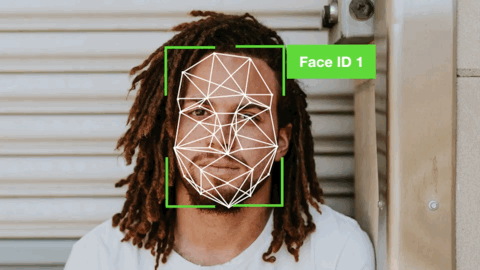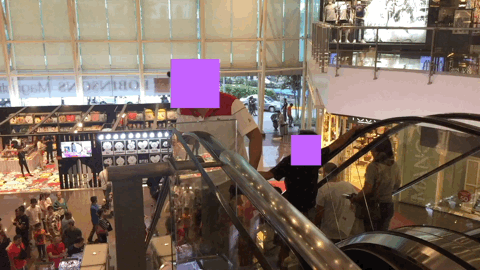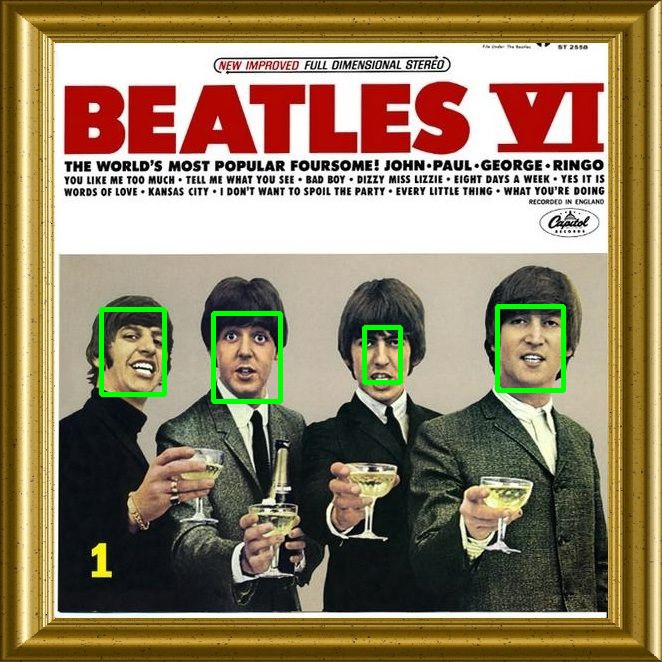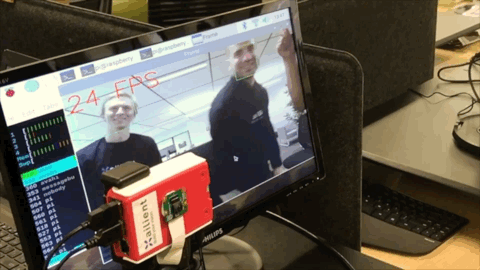By downloading or using the Xailient SDK (the “SDK”) or using the Xailient Cloud
Platform, you and, if applicable, the company or entity that you represent (collectively, “you” or “your”) are consenting to
be bound by and are becoming a party to this SDK License Agreement (“Agreement”) with Xailient, Inc.
(“Xailient”). If you are entering into this Agreement on behalf of a company or other entity, you hereby
represent and warrant that you are authorized and lawfully able to bind such company or entity that
you represent to this Agreement. If you do not have such authority or do not agree to all of the terms
of this Agreement, you may not download or use the SDK.
- LICENSE GRANT. The SDK is licensed and not sold. Subject to the terms and conditions of this
Agreement, Xailient hereby grants you a non-exclusive, non-sublicensable, non-transferable right to
incorporate the SDK into your software solutions, cloud systems, mobile applications or desktop software
(“Your Applications”) and distribute the SDK solely as integrated in Your Applications for internal use by
end users of Your Applications (and not for further distribution), in each case solely for the purpose of
incorporating end user accessibility functionality to Your Applications.You acknowledge that your use of any
components provided with the SDK that are licensed under an open
source software license (“Open Source Components”) are not part of the SDK licensed hereunder and are
subject to and governed solely by the terms of the applicable license(s) for those components, and not by
this Agreement.The Xailient Cloud Platform is licensed and not sold. Access to the web interface, or use of the APIs is
provided at the discretion of Xailient in accordance with the entitlements outlined in Schedule B, Platform
Entitlements and Usage Limits. You may use data pertaining to your connected devices, but may not
access or attempt to access other data. You may use the Xailient Cloud Platform to train an AI SDK (SDK)
based on your proprietary training data. You may use the Xailient Cloud Platform to monitor instances of
the Xailient SDK that you have deployed to your devices.2. RESTRICTIONS. Except as otherwise expressly
authorized herein, you will not directly or indirectly:
use, disclose, modify, sublicense, sell, assign, distribute or otherwise exploit in any manner the SDK,
including that you will not directly or indirectly; remove any proprietary notices or branding from the SDK
and/or use the SDK in violation of any applicable laws or regulations or otherwise outside of the scope of
the license granted herein. In addition, you will not directly or indirectly obtain or attempt to obtain the
source code for the SDK by any means, including reverse engineering, decompilation, disassembly,
translation or similar manipulation of the SDK, unless and only to the extent that applicable law in your
jurisdiction specifically gives you the right to do any of the foregoing. You will immediately notify us of
any unauthorized use, access to or disclosure of the SDK of which you become aware.3. OWNERSHIP.
As between you and Xailient, all right, title and interest in and to the SDK, and any
copies or portions thereof, shall remain with Xailient and its suppliers or licensors. You understand that
Xailient may modify or discontinue offering the SDK at any time without notice. The SDK is protected by
the copyright laws of the United States and international copyright treaties. Nothing in this Agreement
gives you a right to use any of Xailient’s trade names, trademarks, service marks, logos, domain names, or
other distinctive brand features, except to the extent the same may be embedded by Xailient in the SDK’s interface.
Xailient does not grant any and reserves all rights not expressly and unambiguously granted
herein.
You maintain the rights to your training data uploaded to Xailient. Xailient may use aggregate meta-data
regarding the training data and runtime performance of the SDK as outlined in Schedule A: Data Sharing
Agreement.
4. SUPPORT AND UPGRADES.4.1. If Xailient provides you with any updates, upgrades, patches, enhancements
or fixes for the SDK
that it makes generally available free of charge in connection with the SDK, then the items that
are provided will become part of the SDK, as applicable, and subject to this Agreement.4.2. You shall, at
your own expense, be solely responsible for providing technical support and training
to your customers for Your Applications, and Xailient shall have no obligation with respect
thereto. You shall be solely responsible for, and Xailient shall have no obligation to honor, any
warranties that you provide to your customers or to end users with respect to the SDK or Your
Applications.5. INDEMNITY. You agree that Xailient shall have no liability whatsoever for any use you make of
the SDK, Your Applications or Open Source Components, including in relation to any warranties you
provide with respect thereto. You hereby agree to indemnify and hold harmless Xailient and its affiliates,
and each of their directors, officers, employees and agents, from any and all damages, liabilities, losses,
costs, and expenses (including attorneys’ fees) resulting from third party claims arising from Your
Applications or your use, distribution or other exploitation of the SDK, Your Applications or Open Source
Components.6. WARRANTY DISCLAIMER. Xailient PROVIDES THE SOFTWARE, DOCUMENTATION AND OPEN
SOURCE COMPONENTS “AS IS” AND “AS AVAILABLE” WITHOUT ANY WARRANTY OF ANY KIND AND
HEREBY DISCLAIMS, FOR ITSELF AND ITS LICENSORS AND SUPPLIERS, ALL EXPRESS AND IMPLIED
WARRANTIES, INCLUDING WARRANTIES OF MERCHANTABILITY, FITNESS FOR A PARTICULAR PURPOSE,
PERFORMANCE, ACCURACY, RELIABILITY, NON-INFRINGEMENT, AND WARRANTIES ARISING OUT OF
COURSE OF PERFORMANCE, COURSE OF DEALING OR USAGE IN TRADE. THIS DISCLAIMER OF WARRANTY
CONSTITUTES AN ESSENTIAL PART OF THE AGREEMENT.7. LIMITATION OF LIABILITY. NOTWITHSTANDING ANYTHING ELSE, UNDER NO CIRCUMSTANCES
SHALL Xailient OR ITS LICENSORS OR SUPPLIERS BE LIABLE TO YOU OR ANY OTHER PERSON WITH RESPECT
TO THE SUBJECT MATTER OF THIS AGREEMENT UNDER ANY CONTRACT, TORT, NEGLIGENCE, STRICT
LIABILITY, WARRANTY OR OTHER LEGAL OR EQUITABLE THEORY, FOR ANY INDIRECT, SPECIAL, INCIDENTAL
OR CONSEQUENTIAL DAMAGES OF ANY KIND, INCLUDING DAMAGES FOR LOST PROFITS, LOSS OF
GOODWILL, LOSS OF DATA, COSTS OF PROCUREMENT OF SUBSTITUTE GOODS, SERVICES, TECHNOLOGY
OR RIGHTS, INTERRUPTION OF BUSINESS, ACCURACY OF RESULTS, COMPUTER FAILURE OR
MALFUNCTION, OR OTHER DAMAGES IN EXCESS OF ONE HUNDRED DOLLARS (US$100), EVEN IF AWARE
OF THE POSSIBILITY OF SUCH DAMAGES.8. BASIS OF BARGAIN. YOU AND Xailient EACH RECOGNIZE AND AGREE THAT THE WARRANTY
DISCLAIMERS AND LIABILITY AND REMEDY LIMITATIONS IN THIS AGREEMENT ARE MATERIAL, BARGAINED
FOR BASES FOR THIS AGREEMENT AND THAT THEY HAVE BEEN TAKEN INTO ACCOUNT AND REFLECTED IN
DETERMINING THE CONSIDERATION TO BE GIVEN BY EACH PARTY UNDER THIS AGREEMENT AND IN THE
DECISION BY EACH PARTY TO ENTER INTO THIS AGREEMENT.9. TERMINATION. Each party may terminate this Agreement and the license granted
herein at anytime. Upon termination, you must destroy or remove from all hard drives, networks, and storage media,
all copies and extracts of the SDK. All remedies for breach, and Sections 2 through 12 (but not 4.1), shall
survive any termination of this Agreement. YOU ACKNOWLEDGE THAT TERMINATION OF YOUR RIGHTS
TO THE SOFTWARE MAY CAUSE YOUR APPLICATION(S) TO NOT OPERATE PROPERLY, AND Xailient WILL
HAVE NO LIABILITY OR RESPONSIBILITY WHATSOEVER AS A RESULT THEREOF.10. EXPORT. You shall comply with all laws, rules and regulations of
the Department of Commerce, the United States Department of the Treasury Office of Foreign Assets Control (“OFAC”), and other United
States or foreign agency or authority, and not export, or allow the export or re-export of the SDK in
violation of any such restrictions, laws or regulations. By downloading or using the SDK or exercising any
of the rights granted in this Agreement, you are agreeing to the foregoing and representing and
warranting that you are not located in, under the control of, or a national or resident of any country to
which the United States has embargoed good or services or similar restrictions, and you are not identified
as a “Specially Designated National” by OFAC, you are not placed on the U.S. Commerce Department’s
Denied Persons List or any similar lists, and you will not access or use the SDK if any applicable laws in
your country prohibit you from doing so in accordance with this Agreement or limit the terms of this
Agreement.11. GOVERNMENT RESTRICTED RIGHTS. The SDK is deemed to be “commercial computer software”
and “commercial computer software documentation,” respectively, pursuant to DFAR Section 227.7202
and FAR Section 12.212, as applicable. Any use, modification, reproduction, release, performance, display,
transfer or disclosure of the SDK by any agency, department or other entity of any government, shall be
governed solely by the terms of this Agreement and shall be prohibited except to the extent expressly
permitted by the terms herein or in a writing signed by an authorized signatory on behalf of Xailient. No
other rights are granted.12. MISCELLANEOUS. This Agreement contains the complete agreement between you and Xailient
regarding the SDK and supersedes all prior agreements and representations between you and Xailient
regarding the SDK. This Agreement may only be amended and any provision may only be waived by a
writing executed by both parties. You agree to promptly provide Xailient with all information and
documentation that Xailient requests to verify your compliance with this Agreement. If any provision of
this Agreement is held to be invalid or unenforceable, it shall be reformed to the limited extent necessary
to make it enforceable. This Agreement shall be governed by and construed in accordance with the laws
of California, without regard to its conflicts of laws provisions. The courts located in the County of San
Francisco, California, will have exclusive jurisdiction and venue under this Agreement. You may not assign
or transfer any part of this Agreement to any third party. Xailient may assign and transfer this Agreement
without consent to an affiliate or successor to all or substantially all of its business or assets to which this
Agreement relates. Any breach of this Agreement by you would cause irreparable injury to Xailient for
which no adequate remedy at law exists, and you agree that equitable remedies, including injunctive relief
and specific performance, are appropriate remedies to redress any such breach or threatened breach, in
addition to all other remedies available. As used herein, “including” means “including without limitation”.
Schedule A: Data Sharing Agreement
Xailient provides a computer vision platform that incorporates machine learning techniques. To take full
advantage of Xailient technology, customers need to train models specific to them. This requires
customers to provide Xailient with their data. Xailient recognizes that data is a critical asset of our
customers, and is being shared with us for the specific purpose of providing the Customer with service.
Xailient uses a combination of Customer Training Data and Xailient Training Data fed into a Training
Process to create Customer Training Output.
Xailient uses the Customer Training Output and other systems to deliver Xailient Products and/or
Services. After training, the use of Xailient Products and/or Services takes place in Runtime. Use by the
Customer may create Customer Runtime Data.
The following are authorizations granted to Xailient and restrictions placed on Xailient:
1. Xailient will use Customer Training Data to train algorithms (Customer Training Outputs) that are
delivered to the Customer or are run by Xailient to deliver services to the Customer.
2. Xailient will not deliver Customer Training Outputs to third parties, nor use Customer Training
Outputs to provide Xailient Products and/or Services to third parties without the express written
consent of the Customer.
3. Xailient will not use Customer Training Data for any purpose other than to deliver products or
services to the Customer, however,
4. Xailient may use meta-data about the Customer Training Data to improve Xailient Products
and/or Services, or to deliver service to the Customer. This meta-data about Customer Training
Data includes but is not limited to:
1. Information about the size and number of images used in the Training Process,
2. Information about the number of classes (object types) and number of instances of
those classes used in the Training Process,
3. Information about the geometry of ground truth instances, such as size, overlap or
intersection with other ground truth instances,
4. Information about the frequency and correlations of ground truth instances,
5. The problem domain being solved by the Customer,
6. The contrast, brightness, average color depth, or other photometric properties,
7. For the avoidance of doubt, the image bitmap (jpeg, png, mpeg video, video frames etc.)
are not meta-data and are only used to deliver products or services to the Customer.
For example, the following would be an allowed use by Xailient:
Xailient uses the image resolutions, proportionate size of ground-truth
bounding boxes, number of classes, and number of images used to train the
Customer Training Output to estimate the number of images needed to train
a model in a different domain. Xailient then provides a third party with a
recommendation of the number of images they should share with Xailient.
5. Customers may opt-in to the collection of run-time images from the customer by Xailient.
Xailient will not use such Customer Runtime Data for any purpose other than to deliver products or
services to the Customer, for example to provide quality control monitoring to the Customer.
6. Xailient does collect meta-data about the Runtime performance of the Xailient Products and/or
Services. This Meta-data about Runtime includes:
a. The number of images or video frames inputted to the Xailient Products and/or Services,
b. The format, encoding, timestamps and series information of the input,
c. The contrast, brightness or average color depth of the input,
d. Statistics about the output of the Xailient Products and/or Services, including number of
frames with and without objects of interest, the frequency of detection, the geometry of
the detection, the size in bytes,
e. The configuration data of the running Xailient Products and/or Services,
f. Information about the Customer’s runtime environment including hardware and
software running in conjunction with Xailient Products and/or Services,
g. Memory, CPU utilization, persistent storage I/O statistics, network connectivity statistics
of the runtime environment,
h. For the avoidance of doubt, the image bitmap (jpeg, png, mpeg video, video frames etc.)
are not meta-data, and are only used to deliver products or services to the Customer (if
collected at all).
7. Xailient may use meta-data about the runtime performance of the Xailient Products and/or
Services to improve Xailient Products and/or Services, or to deliver service to the Customer.
8. Xailient may use meta-data in anonymized, aggregate form for marketing purposes.
For example, the following would be allowed uses by Xailient:
Xailient publically states that on average drone customers need a specified
number of images per class to train a Xailient Detectum™.
Xailient publically states that on average retail analytics customers save a
specified number of bytes per month in wireless data.
The following are restrictions placed on Customers
1. Customer will not install or run Xailient Products or Services without a Xailient License
Agreement.
2. Customer will use Customer Training Output(s) only for the purpose(s) outlined in the Xailient
License Agreement.
3. Customer will not attempt to reverse engineer the Customer Training Output(s) or Xailient
systems or methods.
4. Customer will not attempt to circumvent the Xailient Digital Rights Management or License.
5. Customer will not redistribute the Customer Training Output(s) to any third party except as
outlined in the Xailient License Agreement.
6. Customer will not grant access to Xailient Products or Services, nor provide their Customer
Credentials to any third party.
7. Customer will not use the Xailient technology in any manner that is discriminatory or in violation
of regulation or laws in the jurisdiction in which Customer operates the Xailient SDK or Xailient
Cloud Platform, nor will Customer upload images depicting nudity to the Xailient Cloud Platform.
Schedule B: Platform Entitlements and Usage Limits
Tier: Premium
Maximum Custom Dataset Upload size: 1 GB
Custom Model Training: Selective Attention 5 models per month, per training charge thereafter
Test video upload and inferencing: 20 videos max, 5 minutes maximum duration each
Support: Console support via email for duration of active subscription, SDK support via email for duration
of active subscription, or 1 year for any perpetual licensed SDKs.
SDK: Each SDK license entitles you to process 1 camera. For subscription licensed SDK, the SDK license
may be reallocated to a different camera once per day. For perpetual licensed SDK, the SDK license may
only be reallocated through the reprovisioning process. If a device cannot be connected for
decommissioning, the SDK license cannot be reallocated. A camera is defined as a single CCD sensor, with a
maximum throughput of 30 frames per second.
Download Agreement
















